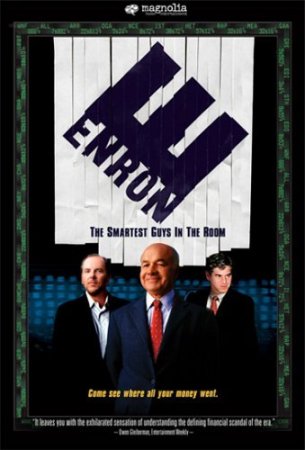 Alex Gibney has quite a pedigree as a filmmaker. He’s been producing or making documentaries since he graduated from Yale. Enron: The Smartest Guys in the Room (2005) was his 8th film or TV series, proving that you don’t have to be an overnight success to be a success. Enron was nominated for an Oscar, and in 2007, Gibney actually won an Oscar with Taxi to the Dark Side (a film I’ll be screening soon).
Alex Gibney has quite a pedigree as a filmmaker. He’s been producing or making documentaries since he graduated from Yale. Enron: The Smartest Guys in the Room (2005) was his 8th film or TV series, proving that you don’t have to be an overnight success to be a success. Enron was nominated for an Oscar, and in 2007, Gibney actually won an Oscar with Taxi to the Dark Side (a film I’ll be screening soon).
This film uses lots of news footage to cobble together a difficult, complex story. I doubt I could ever make a film involving this much research – I don’t have the patience for it. They use documents that were probably entered into courtroom cases as evidence, panning through the document Ken Burns style to help explain how Enron went from being the darling of Wall Street to one of the biggest cases of corporate fraud in history.
Simple but creative use of visuals reinforce what the narrator is talking about (yes, of course there is a narrator in this film – how else would you tell such a complex story? I’d love to know, because maybe I’d have liked the film more if they’d found it). For example, there are cutaway shots of paper being shredded while we hear voiceover about how Enron shredded paper. There’s even a cutaway to a Simpsons cartoon that helps explain things (something Al Gore does in An Inconvenient Truth).
I like the use of music to reinforce and subtly make points in this film. Immediately after a historical clip of Ronald Reagan describing the “magic of the marketplace,” we hear “That Old Black Magic” which is a very effective way to subtly call bullshit on Reagan. “Son of a Preacher Man” is a great choice for the background music while narrator introduces us to Enron wonderkid Jeffrey Skilling. The editing is straightforward: begin the sequence with the music at full volume, fade it down to background so we can hear narrator, and keep it playing until the sequence is complete – then just fade it away.
Structurally, this is a straightforward, traditional doc, with heavy use of historical footage, narration, still photos, cutaway shots and b-roll, all supported by interviews with experts and participants, who are all looking slightly off camera. It’s a time-tested formula, so I award no points for inventiveness in how the film is structured.